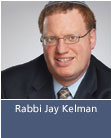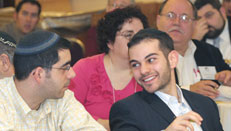 |
||||||||||||
| Weekly Parsha | ||
| Current Week | ||
| Parsha Archives | ||
| Business Ethics | ||
| Dr. Malamet Speaks Out | ||
| TiM MP3 Library | ||




Some thoughts on Rabbi Shamshon Raphael Hirsch |
 Rabbi Shamshon Raphael Hirsch in today's Jewish world could only be a fictional character. An orthodox Jew walking into his shul would likely feel alienated upon both seeing the pulpit Rabbi wearing clerical robes, and listening to the choir conducted by a non-Jew no less. His insistence on decorum would be viewed quite unfavorably in many a modern day shul. Walking into his school would be no less "unorthodox". Long before Bais Yaakov he championed girls' education, founding a co-ed school (though the classes themselves were separate). While the boys did not wear kippot in general studies classes, Rabbi Hirsch insisted that all Jewish teachers be fully observant. There was very little Talmud studied at his school, the focus instead being Torah, Tehilim and Jewish thought. School outings included trips to the Swiss Alps to appreciate the beauty of G-d's world. Clearly many orthodox parents of today would be uncomfortable sending their own children to such a school, though it was Shamshon Raphael Hirsch who must get much of the credit for the day school movement of today. In addition there was little in religious Zionist education, not because the movement was in its infancy, but rather because like most rabbis of the day Rav Hirsch believed we should wait for the messianic era before retuning to the land of Israel. In the meantime he insisted that Jews should be proud Germans fully involved in their native country's intellectual and cultural life. His comfort with the "Fatherland" is frightening in light of what would be a mere 50 years after his death. Who could have known! It is quite fascinating that what we call today Charedei Orthodoxy and Reform Judaism were in agreement in their assessment of the impact of modernity on Judaism, that the two could not coexist. The chareidim (a term that did not yet exist) under the leadership of the Chatam Sofer declared that chadash assur min haTorah , "all that is new is forbidden by the Torah" consciously rejecting the benefits of modernity. The reformers agreed that traditional Judaism and modernity could not co-exist, except that they consciously rejected Jewish law while embracing the benefits of modernity. It was Shamshon Raphael Hirsch who almost single handedly declared that modernity and traditional Judaism could not only coexist but could enhance one another. Colloquially, o ne could have his cake and eat it too. His synthesis has become the model for hundreds of thousands of Jews around the world including many self-proclaimed cha reidi m , who, often unbeknow nst to them , have chosen a lifestyle much closer to Rav Hirsch than to the C hatam S ofer. Yet notwithstanding his openness to modernity his war on the reformation of Judaism was relentless. He successfully petitioned the German government to recognize Orthodoxy as a religion separate and distinct from the reformers. While the majority of orthodox rabbis vehemently disagreed with his separatist approach it became the hallmark of Agudat Yisroel founded by his students and descendants. While his legacy is hotly debated today one would hardly be exaggerating to suggest that modern Jewish life would be much different if not for the enormous contribution of Rabbi Shamshon Raphael Hirsch . Sadly many Jews, including many orthodox ones across the spectrum, are unfamiliar with his enormous impact and influence as well as the debate he inspired touching to the core of what it means to be a Jew in the Modern world. We hope that the conference on Sunday (details below and here) will inspire you to examine the life, legacy and writings of Rabbi Shamshon Raphael Hirsch . His ideas continue to stand the test of time. We hope you can join us for an illuminating day.
|
|
|

 |
 |